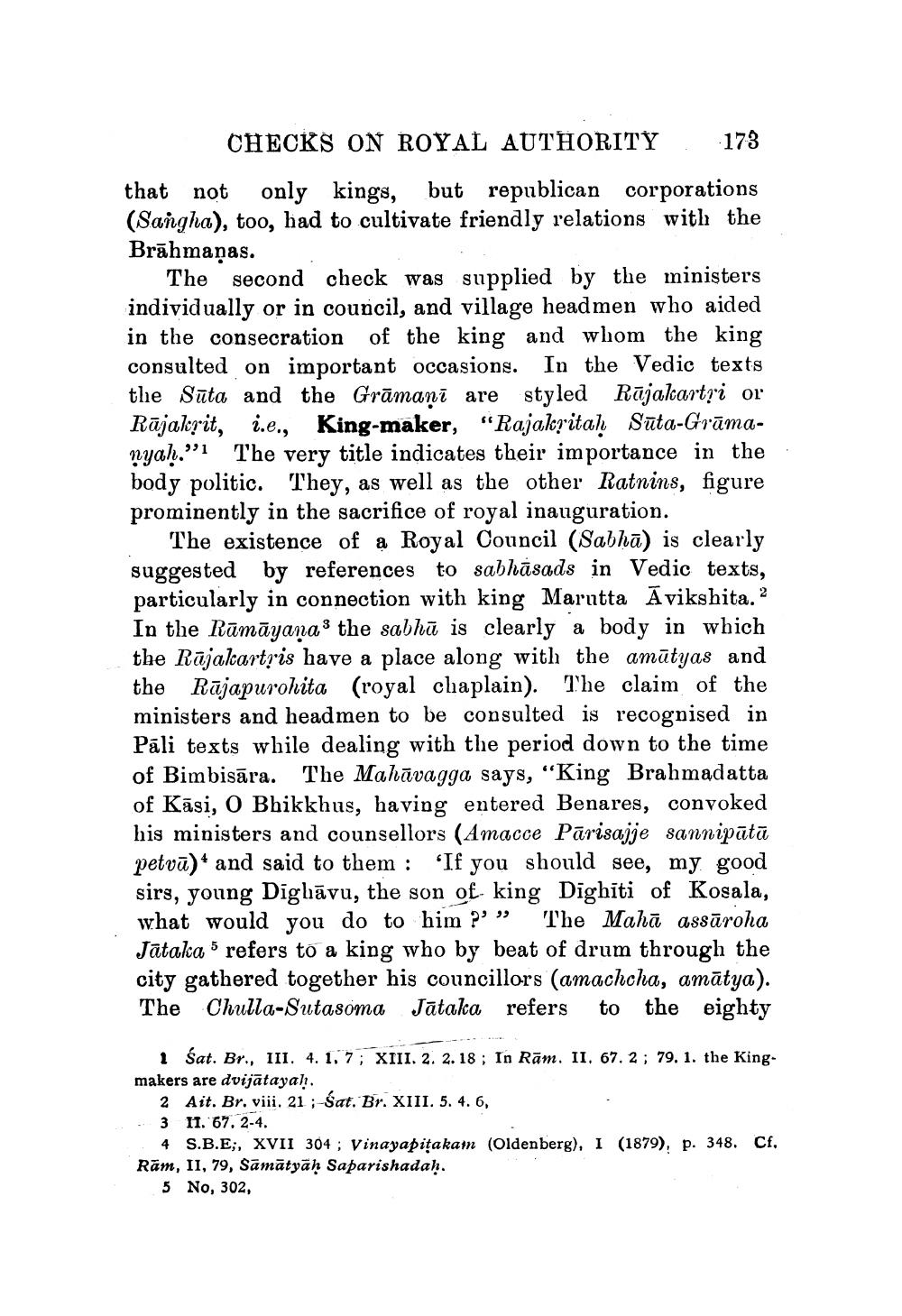________________
173
CHECKS ON ROYAL AUTHORITY
that not only kings, but republican corporations (Sangha), too, had to cultivate friendly relations with the Brāhmaṇas.
The second check was supplied by the ministers individually or in council, and village headmen who aided in the consecration of the king and whom the king consulted on important occasions. In the Vedic texts the Suta and the Gramani are styled Rajakartṛi or Rajakrit, i.e., King-maker, "Rajakritah Suta-Grāmanyah." The very title indicates their importance in the body politic. They, as well as the other Ratnins, figure prominently in the sacrifice of royal inauguration.
The existence of a Royal Council (Sabha) is clearly suggested by references to sabhasads in Vedic texts, particularly in connection with king Marutta Avikshita. 2 In the Ramayana the sabha is clearly a body in which the Rajakartris have a place along with the amatyas and the Rajapurohita (royal chaplain). The claim of the ministers and head men to be consulted is recognised in Pali texts while dealing with the period down to the time of Bimbisara. The Mahavagga says, "King Brahmadatta of Kasi, O Bhikkhus, having entered Benares, convoked his ministers and counsellors (Amacce Parisajje sannipātā petvu) and said to them : 'If you should see, my good sirs, young Dighavu, the son of king Dighiti of Kosala, what would you do to him ?" " The Maha assaroha Jataka refers to a king who by beat of drum through the city gathered together his councillors (amachcha, amatya). The Chulla-Sutasoma Jataka refers to the eighty
1 Śat. Br., III. 4. 1, 7; XIII. 2. 2. 18; In Rām. II. 67. 2; 79. 1. the Kingmakers are dvijatayah.
2 Ait. Br. viii. 21; Sat. Br. XIII. 5. 4. 6,
3 II. 67. 2-4.
4 S.B.E;, XVII 304; Vinayapiṭakam (Oldenberg), I (1879), p. 348. Cf. Rām, II, 79, Samatyah Saparishadah.
5 No, 302,




